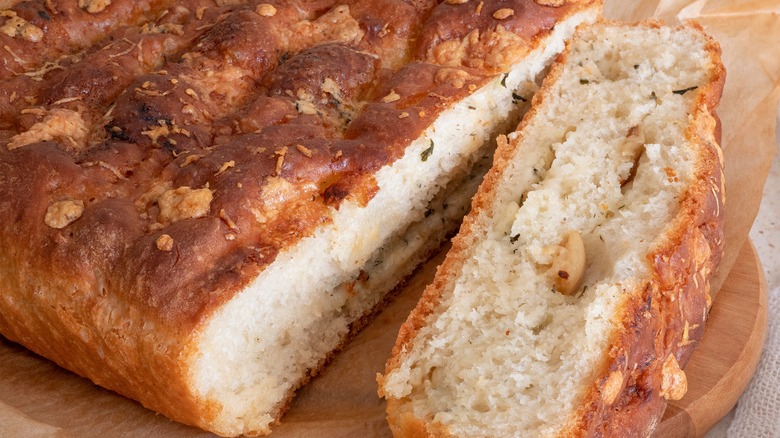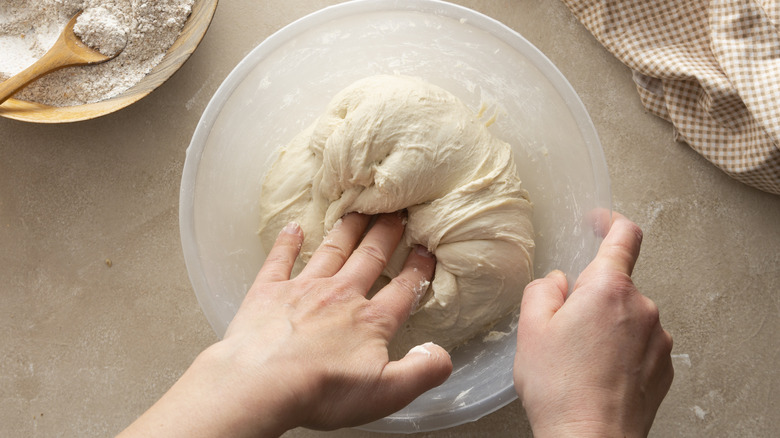Give Sourdough An Italian Twist With Some Rustic Inclusions
If you've mastered the tedious yet rewarding art of making sourdough bread, you're ready for the next step! It's time to embellish a sourdough loaf with additional ingredients called inclusions. Italy's numerous forms of inclusion-laden focaccia and panettone are the perfect inspiration for your next sourdough adventure.
For a savory Italian sourdough, you can look to Italian charcuterie, with inclusions like olives, cured salami, and shredded or shaved parmesan. Sun dried tomatoes, caramelized onions, garlic, and pine nuts would make for a well-balanced blend of aromatic, sweet, and savory sourdough. You could also add fresh basil, garlic, parmesan cheese, and pine nuts to imitate the flavors of pesto. Keep your sourdough rustic and simple by using a blend of common Italian herbs like fresh rosemary and dried oregano. Rosemary and roasted potato rounds can be incorporated for a take on Italy's humble potato pizza.
For sweet inclusions, regional sweet breads abound to provide inspiration. If you love panettone, then you can add candied lemon or orange peel and rum-soaked raisins. And pine nuts, almonds, pistachios, and candied fruit would all be easy and flavorful inclusions for an Italianized sweet sourdough.
How to add inclusions to sourdough
It's easy to stir some bacon and jalapeños into cornbread batter or chocolate chips and nuts into cookie dough, but sourdough is another story. The long process of making sourdough includes various resting times punctuated by stretching and folding the dough before fermentation. The dough needs to be pliable enough to receive and retain inclusions, so adding them requires the same precision and attention to timing as the sourdough recipe itself. If you try to knead inclusions into the sourdough too early, they'll be promptly rejected and pop out of the taut dough.
Tasting Table provides a guide on how to add inclusions to sourdough, emphasizing the importance of both timing and proportions. Before adding the inclusion, you need to calculate the correct proportion of inclusions to dough based on the weight of your inclusions; For heavier inclusions like seeds, nuts, olives, veggies, cheese, and dried fruit, the inclusions should comprise 20%-25% of the dough's weight, while light inclusions like herbs and spices should comprise between 2%-6% percent. You should add the inclusions during the middle set of stretching and folding the dough before fermentation. The first set of stretches will develop the gluten enough to accept inclusions, while the subsequent stretches and folds will cement them into the dough.

